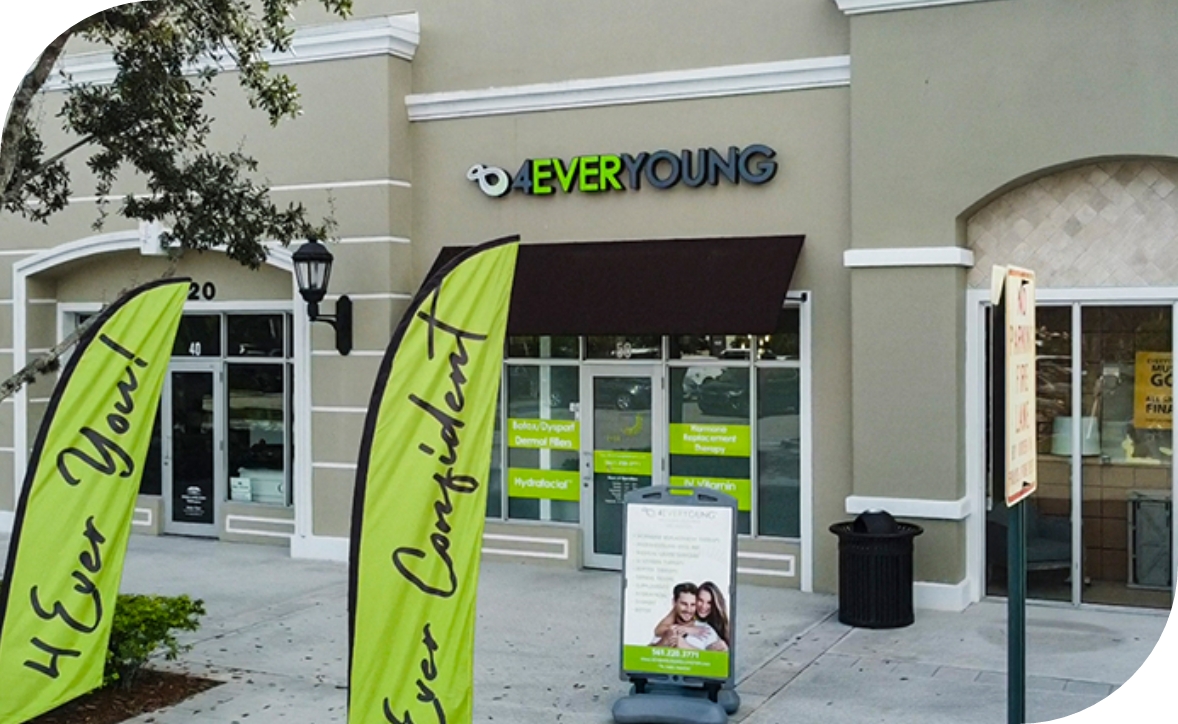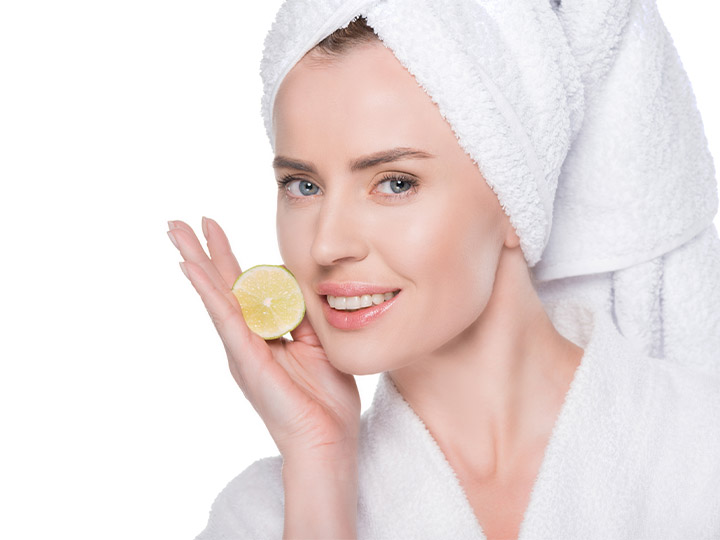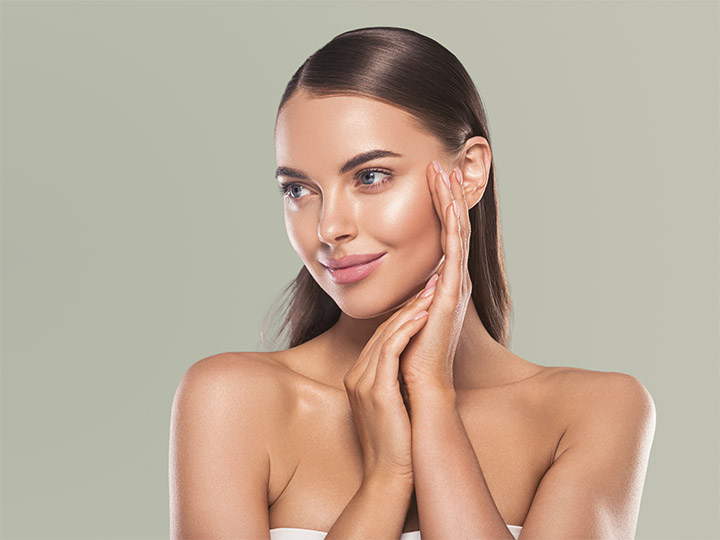Non-Invasive Solutions for Fine Lines and Wrinkles
Fine lines and wrinkles are a natural part of aging, but modern cosmetic science offers many ways to soften their appearance without surgery. In recent years, various non-invasive wrinkle treatments have surged in popularity as people seek to rejuvenate their skin with minimal downtime or risk. In fact, global cosmetic statistics show that in 2023, there were about 19.1 million nonsurgical aesthetic procedures performed by plastic surgeons worldwide. This reflects an enormous demand for non-invasive anti-aging treatments that can achieve visible results without the need for invasive facelifts or other operations. From advanced skin therapies to at-home skincare, today’s facial rejuvenation treatments include a wide range of options.

Understanding Fine Lines and Wrinkles
As we age, our skin produces less collagen and elastin. The proteins are responsible for keeping skin firm, plump, and elastic. Repeated facial expressions also create creases in the skin over time. Additionally, external factors play a huge role. Chronic sun exposure, or photoaging, is the single biggest contributor to wrinkles: UV light from the sun is responsible for about 90% of visible skin aging changes, such as wrinkles and age spots. Ultraviolet rays penetrate the skin and damage collagen fibers, which leads to the skin gradually losing its structure and elasticity. This causes fine lines to deepen into more pronounced wrinkles. Other factors like smoking, pollution, poor diet, and stress can accelerate the breakdown of the skin’s support structure as well. Fine lines are generally the earliest, shallow wrinkles, while deeper wrinkles or folds develop with further aging. Knowing that collagen loss and sun damage are primary culprits helps guide us toward effective wrinkle prevention methods.
Wrinkle Reduction Without Surgery: Benefits and Advantages
Surgical procedures like facelifts can certainly tighten skin and reduce wrinkles, but not everyone is ready or willing to undergo surgery. This is where wrinkle reduction without surgery becomes so appealing. Non-surgical or minimally invasive approaches offer several key advantages:
- Lower Risk and Minimal Downtime: Non-invasive treatments do not require large incisions or general anesthesia, which means significantly less risk of complications and scarring. Most procedures are done in-office with little to no recovery time needed.
- Natural-Looking Results: These methods tend to produce gradual improvements in skin tone and texture, avoiding the overly “pulled” look that can sometimes happen with aggressive surgical lifts. You can achieve a refreshed appearance while still looking like yourself.
- Accessible and Convenient: Many non-surgical wrinkle removal techniques can be completed in under an hour per session. For example, a Botox injection appointment or a laser facial might take only 30–60 minutes. This convenience allows people to fit treatments into their regular schedule without a hospital stay.
For those seeking effective wrinkle reduction therapy that is gentler than surgery, the options are plentiful. From high-tech energy devices to advanced skincare products, patients today can often significantly improve fine lines through routes that are far less invasive than a traditional facelift.
Topical Anti-Aging Skincare Solutions
One of the first lines of defense against fine lines is proper skincare. A number of evidence-backed anti-aging skincare solutions can help reduce wrinkles or slow their development. Foremost among these are retinoids, the vitamin A derivatives found in products like retinol creams or prescription tretinoin. Retinoids are widely considered the gold standard topical treatment for aging skin – they increase the turnover of skin cells and boost new collagen production, which gradually diminishes fine lines. Fermatologists have found that retinoid creams do visibly reduce fine lines and wrinkles by stimulating collagen remodeling in the skin. Regular nightly use of a retinoid can lead to smoother, firmer skin over a period of months. Aside from retinoids, several other topical ingredients play a role in rejuvenating the skin:
- Hydroxy Acids (AHAs/BHAs): Chemical exfoliants like glycolic acid or lactic acid can help shed dead skin cells on the surface, improving skin texture and fine lines. They promote a fresher, brighter complexion and allow other products to penetrate better.
- Antioxidants (Vitamin C, E, etc.): Topical vitamin C serums are popular for good reason – vitamin C is an antioxidant that helps neutralize free radicals from UV light and pollution, protecting collagen from damage. It also aids collagen synthesis and can lighten sun-induced pigmentation. Used daily under sunscreen, vitamin C can help maintain smoother, more even-toned skin. Other antioxidants like vitamin E, niacinamide (vitamin B3), and green tea extract support skin repair and calming of inflammation, indirectly helping with aging signs.
- Hyaluronic Acid: This molecule doesn’t rebuild collagen, but it is a powerful hydrator. Hyaluronic acid attracts and retains moisture in the skin. When used in serums or creams, it plumps up the skin’s surface temporarily, making fine lines less noticeable. Well-moisturized skin simply looks more supple and shows fewer wrinkles.
- Peptides and Growth Factors: Peptides are small protein fragments that can signal skin cells to produce more collagen or elastin. Some peptide-infused creams aim to firm the skin over time. While their effects are more subtle than prescription retinoids, peptide products can be a supportive addition to an anti-aging regimen. Similarly, some advanced skincare products include growth factors or stem-cell conditioned media, which may encourage skin repair and collagen growth.
Consistency is key with topical treatments. Typically, you need to apply these treatments for fine lines daily over long periods to see noticeable improvements. It’s also crucial to wear sunscreen during the day when using ingredients like retinol or AHAs, as they can increase sun sensitivity.
Chemical Peels and Microdermabrasion
When it comes to mild to moderate skin rejuvenation, exfoliation-based treatments are among the most popular fine line treatment options. Two common procedures in this category are chemical peels and microdermabrasion. In a chemical peel, a dermatologist or licensed aesthetician applies a chemical solution to the skin that causes controlled peeling. Superficial peels often use alpha-hydroxy acids (like glycolic or lactic acid) or beta-hydroxy acid (salicylic acid), which loosen the “glue” holding together dead cells on the skin’s surface. After a peel, the top layers of skin gradually slough off over several days, revealing newer skin underneath. Light peels can brighten the complexion and soften fine lines; a series of peels can modestly improve wrinkles and pigmentation. For more pronounced wrinkles, medium or deep peels can achieve more dramatic resurfacing, essentially removing deeper layers of skin so that new, less-wrinkled skin can form. However, deeper peels come with more downtime and risks, so medical professionals must perform them. Chemical peels are versatile treatments for fine lines as well as uneven tone or age spots. They essentially “refresh” the skin by prompting a regenerative process.
In microdermabrasion, very fine crystals or a diamond-tipped wand are used to abrade the top layer of skin gently. It’s like a very controlled sanding of the skin surface, removing dead cells and stimulating circulation in the skin. Microdermabrasion is painless and requires no anesthesia; multiple sessions are typically done a few weeks apart. It can help reduce the look of very fine lines and give the skin a smoother, more radiant finish. Microdermabrasion primarily targets the epidermis (outer layer), so its wrinkle-reducing effects are subtle. It’s best suited for early lines or as a maintenance method to enhance skin glow. One advantage is that there’s virtually no recovery needed, aside from some mild redness. Think of it as a powerful exfoliating facial that, over repeated treatments, can make the skin feel softer and slightly firmer.

Both chemical peels and microdermabrasion can be combined with other therapies in a skincare plan. For example, doing a light chemical peel can enhance the penetration of anti-aging serums. They are relatively natural wrinkle reduction approaches in that they rely on the skin’s own healing abilities. These options are widely available and can be a great starting point for someone looking to revitalize their face with minimal invasiveness.
Laser and Light Therapies
Advancements in laser technology have provided powerful tools to resurface aging skin and prompt new collagen growth. Laser and light-based treatments can address wrinkles, pigmentation, and overall skin texture with precision. There are a few types of laser approaches commonly used for skin rejuvenation:
- Ablative Lasers: These lasers physically remove the outer layers of skin. They vaporize microscopic columns of tissue in the skin. As the skin heals from these tiny wounds, new collagen is produced, and the surface skin is remodeled. Ablative laser resurfacing is quite effective for wrinkles. For example, it can significantly soften smoker’s lines around the mouth or crinkles under the eyes. However, it does involve some downtime since it’s an aggressive treatment. Newer fractional ablative lasers (like fractional CO₂) treat only a fraction of the skin at a time, which speeds healing while still improving wrinkles.
- Non-Ablative Lasers: These lasers (for example, Nd: YAG or non-ablative fractional lasers) deliver energy into the deeper layers of the skin without fully removing the surface. They heat the dermis to stimulate collagen remodeling, but leave the epidermis mostly intact. Because they don’t cause an open wound, downtime is much shorter. Non-ablative treatments are generally gentler and often done in a series of sessions. They gradually improve fine wrinkles and skin tightness over a few months as new collagen forms. The wrinkle improvement is more modest than ablative lasers, but the safety and recovery are easier.
- Intense Pulsed Light (IPL): Technically not a laser (IPL uses broad-spectrum light), IPL photofacials are popular for improving sun damage and pigmentation. While IPL’s primary targets are brown spots and broken capillaries, many users also notice a slight improvement in fine lines and overall skin texture after a series of treatments. IPL stimulates some collagen production and can give the skin a more even tone, indirectly making wrinkles less noticeable.
- LED Light Therapy: At the gentlest end of the spectrum, LED devices use specific wavelengths of light to stimulate cells and boost collagen. The effect of LED on wrinkles is subtle, and evidence is still emerging, but red light therapy has shown some potential to reduce fine lines and inflammation in the skin. LED therapy can be a nice adjunct to other treatments, helping calm skin and potentially supporting collagen maintenance.
Laser and light treatments, especially the more aggressive ones, should be performed by trained professionals because skin type and settings need to be carefully considered to avoid burns or pigmentation issues. When done correctly, these technologies provide significant skin rejuvenation without surgery.
Ultrasound and Radiofrequency Skin Tightening
Not all wrinkles are strictly due to surface skin damage. Sagging tissues and loss of firmness in the deeper layers of the skin cause some. This is where energy-based non-invasive skin tightening treatments come into play. Ultrasound and radiofrequency (RF) devices can heat the deeper dermis and even the superficial muscle layer under the skin, causing tissue contraction and new collagen production that leads to tighter, lifted skin over time. These technologies effectively firm the foundation beneath the wrinkles, thereby smoothing the skin from below.
Microneedling and Collagen Induction Therapy
Microneedling has rapidly gained popularity as a versatile, minimally invasive procedure for rejuvenating the skin and reducing wrinkles. In microneedling, also called collagen induction therapy, a device with very fine needles creates tiny punctures in the skin’s surface. These micro-injuries are very small and don’t cause actual damage, but they “trick” the skin into activating its healing response. As a result, the skin ramps up production of collagen and elastin to repair the perceived injury. The new collagen that forms can significantly improve skin firmness and texture, thereby softening fine lines and wrinkles. In essence, microneedling is one of the most effective collagen-boosting treatments for aging skin available in dermatology today.
The realm of non-invasive dermatology treatments has opened up a world of possibilities for those looking to combat fine lines and wrinkles. From high-quality topical products and gentle peels to cutting-edge lasers, energy devices, and injectables, there is a range of solutions to suit various skin concerns and comfort levels. Often, the best approach is a combination of these therapies – for example, using skincare and wrinkle prevention methods daily, getting periodic laser or microneedling sessions to boost collagen. Such a comprehensive approach can address both the surface and the underlying causes of wrinkles, leading to truly rejuvenated skin without the need for surgery. For personalized guidance, professional anti-aging centers like 4Ever Young Anti-Aging Solutions offer expert consultations. Such clinics can tailor a custom plan for non-surgical facial rejuvenation, often combining several therapies to target your specific concerns in a synergistic manner. The result is a refreshed appearance that still looks like you, just a more youthful and radiant version.

You don’t need to go under the knife to reduce wrinkles and achieve a significantly smoother complexion. With advances in non-invasive treatments and a good skincare and lifestyle regimen, fine lines and creases can be effectively minimized. By leveraging these modern solutions and protecting your skin for the future, you can truly age gracefully and maintain a confident, youthful appearance at any age.
Sources
- International Society of Aesthetic Plastic Surgery (ISAPS) – Global Survey 2023 Press Release (June 12, 2024) isaps.org
- The Skin Cancer Foundation – “Photoaging: What You Need to Know About the Other Kind of Aging” (2019) skincancer.org
- Harvard Health Publishing – “Do retinoids really reduce wrinkles?” (Jan 13, 2025) health.harvard.edu
- American Board of Cosmetic Surgery – Guide to Non-Surgical Skin Tightening americanboardcosmeticsurgery.org
- Jaiswal et al., 2024 – Microneedling in Dermatology: A Comprehensive Review of Applications, Techniques, and Outcomes pmc.ncbi.nlm.nih.gov
- American Board of Cosmetic Surgery – Botox-type Injectables Guide americanboardcosmeticsurgery.org
- Stanford Medicine – “Sunscreen fact and fiction: What the science says” (2025) med.stanford.edu







